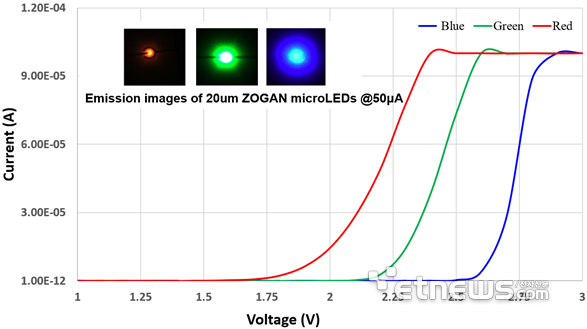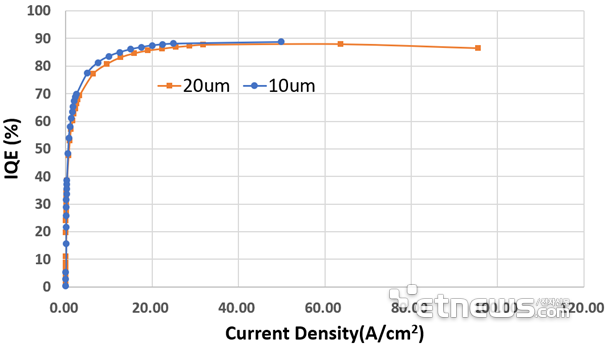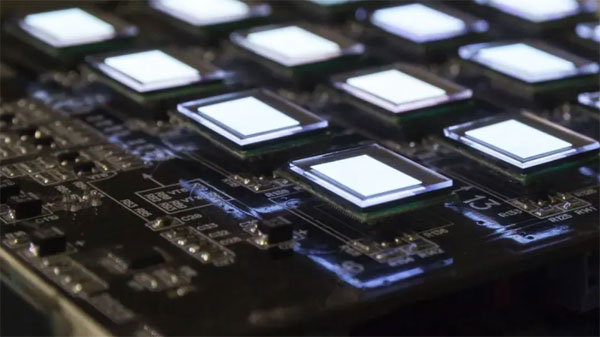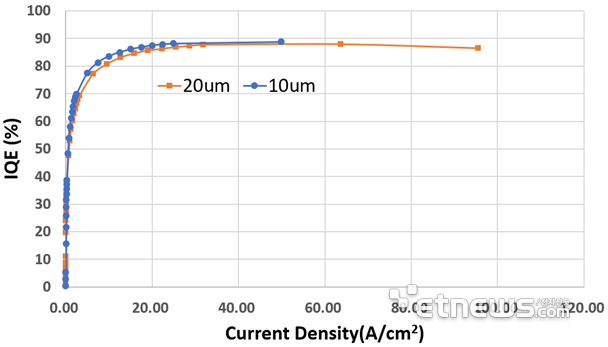According to recent reports from South Korean media, the Korea Photonics Technology Institute (KOPTI) has announced the successful development of efficient and fine Micro LED technology. The internal quantum efficiency of the Micro LED can be maintained within a range of 90%, regardless of the chip size or different injection current densities.
20μm Micro LED current-voltage curve and emission image (image credit: KOPTI)
This Micro LED technology was jointly developed by Dr. Jong hyup Baek's team from the Optical Semiconductor Display Department, the ZOGAN Semi team led by Dr. Woong ryeol Ryu, and Professor Jong in Shim from the Department of Nano-Optoelectronics at Hanyang University. The product addresses the issue of rapidly decreasing light emission efficiency in Micro LEDs due to shrinking chip sizes and increased injection currents.
It has been found that Micro LEDs below 20μm in size not only experience a rapid decrease in light emission efficiency but also exhibit significant non-radiative recombination losses within the low current range (0.01A/cm² to 1A/cm²) required for driving display panels. Currently, the industry partially mitigates this issue through passivation processes on the chip's side, but it does not fundamentally solve the problem.
The internal quantum efficiency (IQE) of the 20μm and 10μm blue Micro LED varies according to the current density
KOPTI explains that the research team has reduced the strain in the epitaxial layer and improved the light emission efficiency by implementing a new structure. This new structure suppresses the physical stress variations of the Micro LED under any external electric field or structure. As a result, even with a smaller Micro LED size, the new structure significantly reduces surface non-radiative recombination losses while maintaining high light emission efficiency without the need for passivation processes.
The team has successfully validated the application of efficient and fine Micro LED technology in blue, gallium nitride green, and red devices. In the future, this technology holds the potential to produce full-color gallium nitride Micro LED displays.
Post time: Oct-30-2023





